Table of Contents
Homemade French Bread using extremely limited ingredients of all-purpose flour, active dry yeast, sugar, salt, and water is so refreshingly tasty. Toast it over the cast iron griddle and then spread it with homemade wild blueberry sauce is my kind of breakfast. Perfect to go with a cup of freshly brewed homemade Chai Tea.
It is super easy too with an active time of merely under 30 minutes. The catch is that making a starter plus completing two-stage proofing simply takes time, but is perfect for multitasking while waiting.
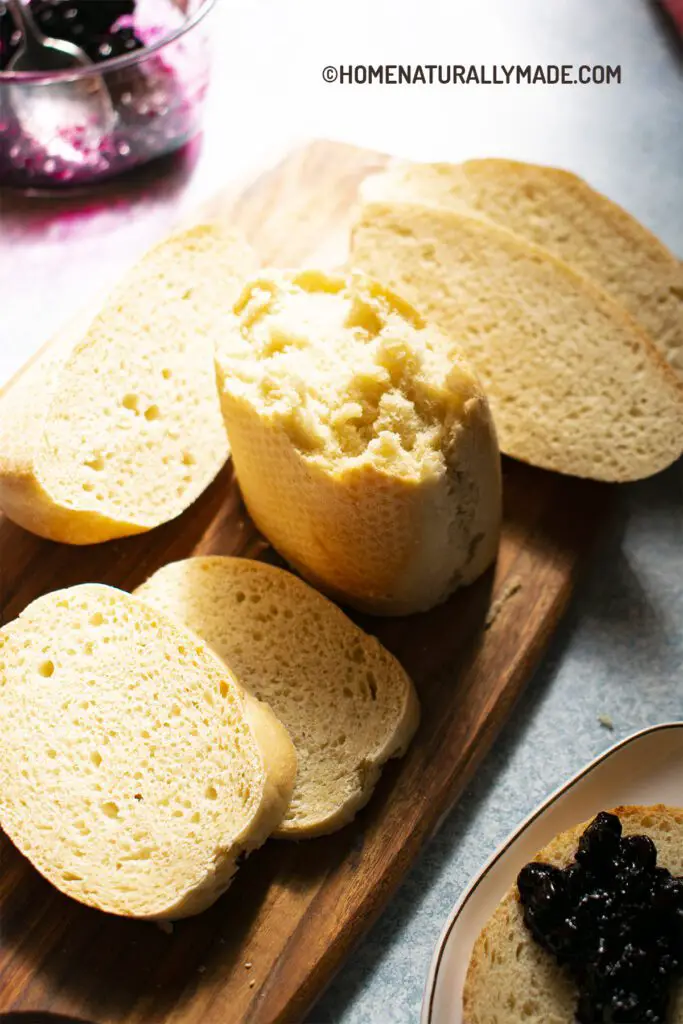
How to make French Bread easy, yummy, and healthy?
Tip No.s is always dissolving the active dry yeast in water first
I use active dry yeast for all my bread and bun needs. They work out perfectly. The key to maximizing the active dry yeast power is to dissolve and mix active dry yeast powder in room temperature water into a smooth paste first thing first before adding it to the flour. Never add the powder into the flour directly.

Tip No.2 is to make a starter for the French Bread and rest for about 2 hours
The starter initially looks like a batter. Cover it with a thick damp kitchen towel and rest for about 2 hours, or till it turns into a sponge.
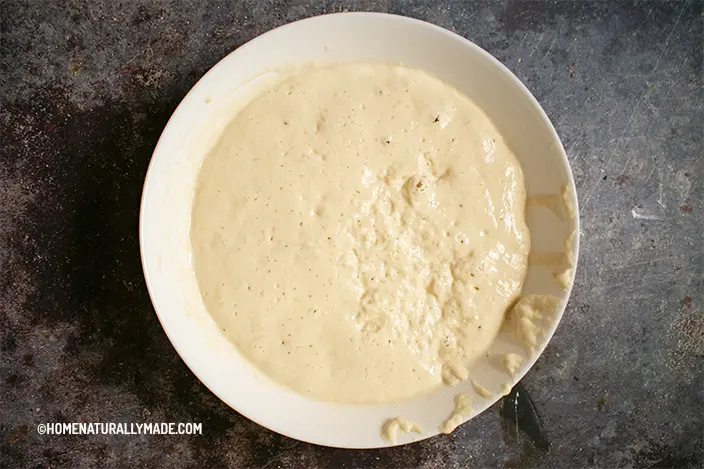
Tip No.3 is to make a super thick batter using the starter and proof for 30 minutes or so
Combine the starter with additional ingredients (active dry yeast plus water to form a paste, all-purpose flour, sugar, and salt) and mix well, using a silicone spatula. Gradually add water to blend in until you have a very sticky dough. Cover it with a damp kitchen towel and let it rest for about 30 minutes.
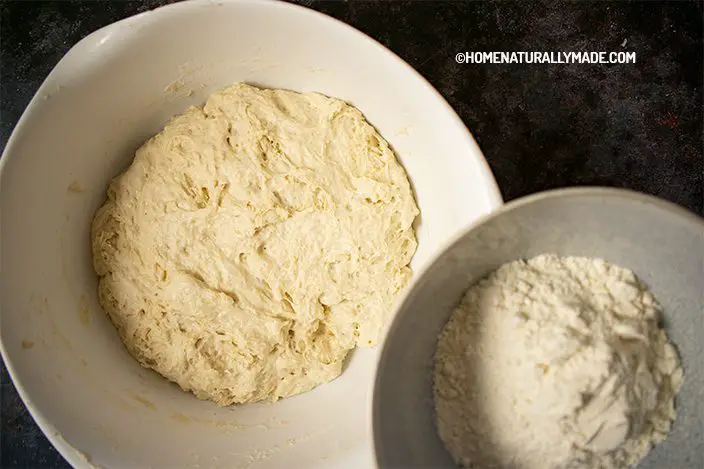
Tip No.4 is to add additional flour to form a sticky dough and use a slap and fold method to make the dough smooth
Add additional flour and knead to combine and blend. The dough may appear very sticky at this point, but don’t worry. We are going to use a slap and fold method to knead the dough to make it smooth and soft in minutes.
Hold the dough in one hand and then slap it against a hard surface such as the kitchen granite countertop. Fold the dough together and repeat the slapping. As you continue to do so, you will notice the dough further stretches out and becomes cohesive, smooth, and soft.
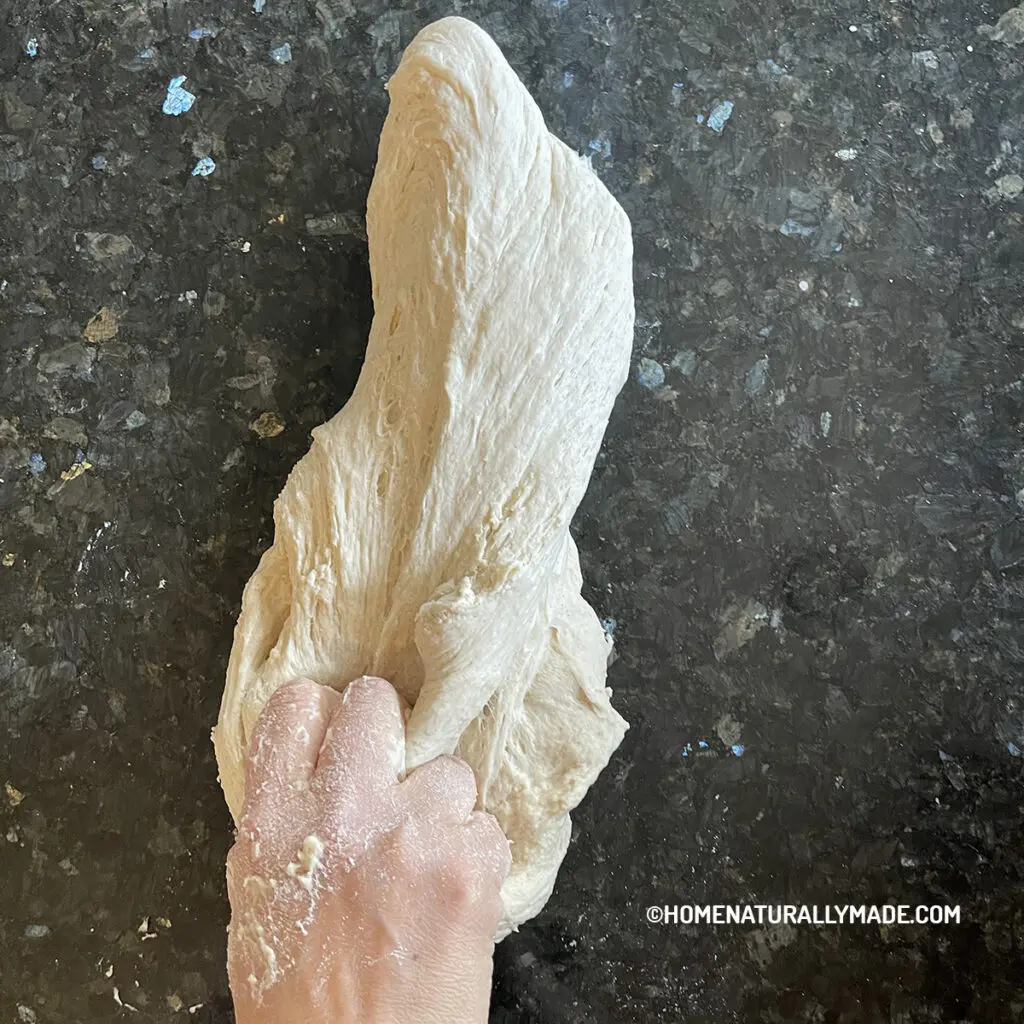
Tip No.5 is to twist & stretch the dough and go through the second proofing
This recipe makes 2 long French Bread. Divide the dough into 2 equal portions. For each portion, use your hands to knead into a long cylinder shape, similar length to the baguette pan, and then fold into halves. Use both hands to hold each end and then twist while stretching to extend it back to the baguette pan length.
Repeat this another two more times. Then roll it round and tall and then place them onto the baguette pan. Let it rest in an enclosed environment such as the microwave or unheated oven for about 2 hours or till the dough doubles its size.
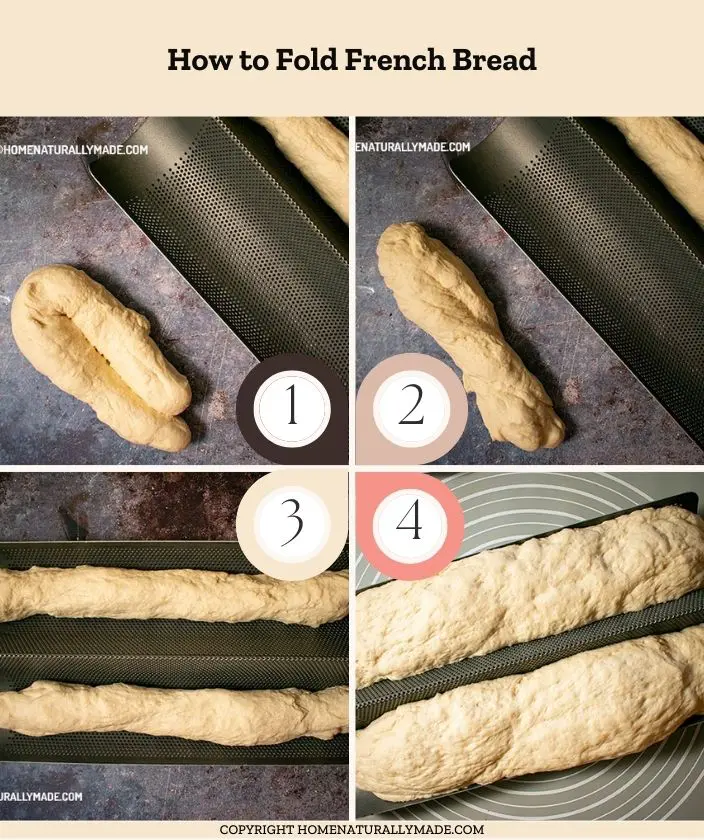
Last but not least is to bake French Bread
Preheat the oven to 375 F degrees and place the baguette pan on the middle rack and bake for about 30 minutes. If preferred, use a knife to score the top of the bread right before putting it into the oven. Nevertheless, the way I fold the bread doesn’t necessarily need scoring.
Enjoy a naturally yummy and refreshingly tasty French Bread!
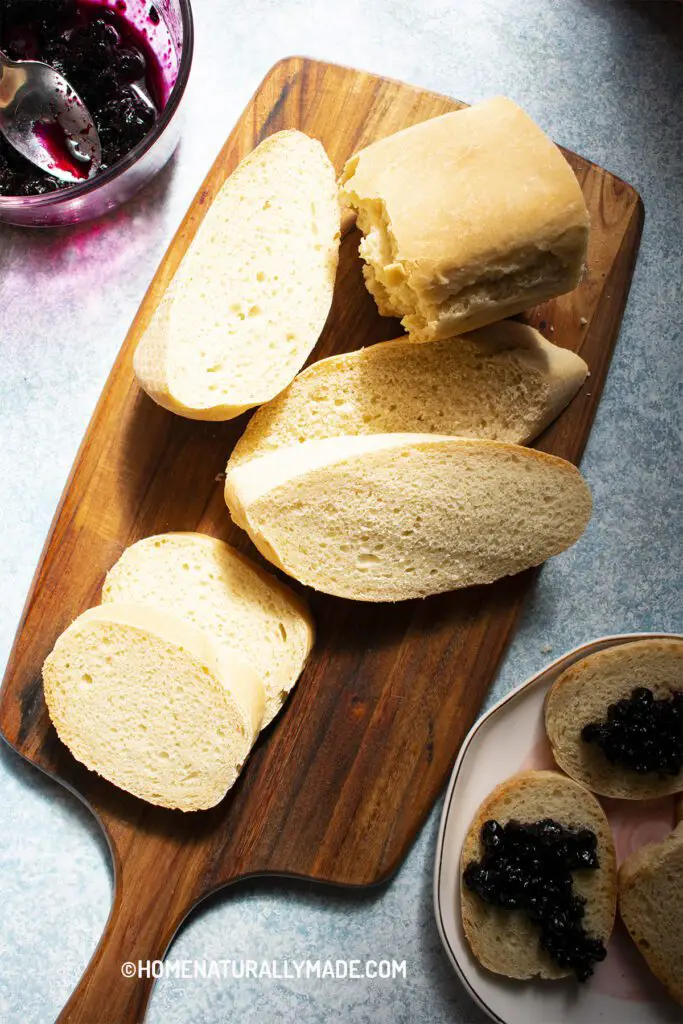
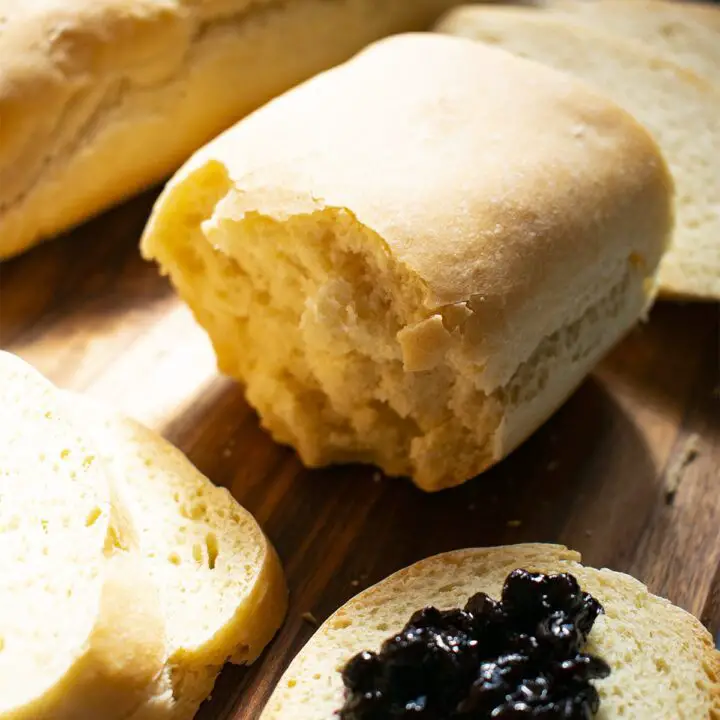
French Bread Recipe {Easy Yummy and Healthy Way}
Homemade French Bread using extremely limited ingredients of all-purpose flour, active dry yeast, sugar, salt, and water is so refreshingly tasty. It is super easy too with active time is merely under 20 minutes.
Ingredients
For Starter:
- 180 g all-purpose flour, unbleached organic preferred
- 1/2 tsp active dry yeast
- 230 g water, room temperature
For Phase I Proofing:
- 390 g all-purpose flour
- 1 tsp active dry yeast
- 1 tbsp cane sugar, organic unrefined preferred
- 1 1/4 tsp Himalayan pink salt
- 180 g water, approximate, see notes
For Phase II Proofing:
- 135 g all-purpose flour
Instructions
Prepare the Starter:
- Gather ingredients under "For Starter". Measure and place the flour in a large mixing bowl. Measure the water in a 2-cup glass measuring cup. Add the active dry yeast powder to a small bowl along with about 1/2 cup of water from the measuring cup. Mix well until the active dry yeast is fully dissolved and blended into a smooth paste.
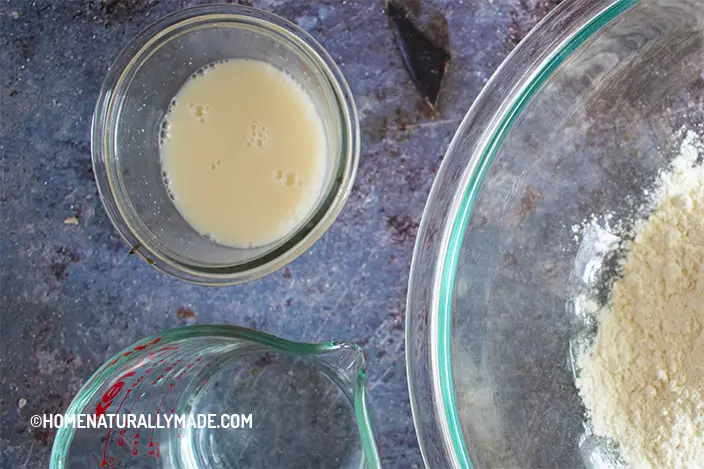
- Add the yeast paste to the mixing bowl and the rest of the water. Mix well then cover it with a damp kitchen towel and rest for 2 hours, or till it turns into a sponge.

Phase I Proofing:
- Gather additional ingredients under "For Phase I Proofing". Measure out the water in the 2-cup measuring cup. Add 1 tsp active dry yeast to the small bowl. Use the same process as before to form a smooth paste.
- Add the flour into the starter mixing bowl, as well as the yeast paste, sugar, and salt.
- Cover it with the damp kitchen towel and rest for about 30 minutes.
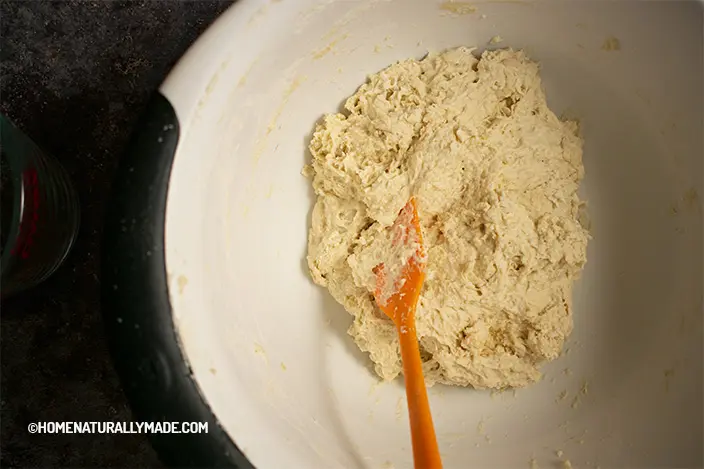
Phase II Proofing:
- Measure out 135 g of all-purpose flour and add it to the mixing bowl.

- Use the silicone spatula first and then hands to knead the dough and blend it into a somewhat sticky dough.

- Slap and Fold the Dough - Hold the dough in one hand and then slap it against a hard surface such as the kitchen granite countertop with full force. The dough stretches out long upon slapping. Then fold the dough into haves and do it again. As you repeat, you will notice the dough further stretches out and becomes cohesive, smooth, inflated, and soft.
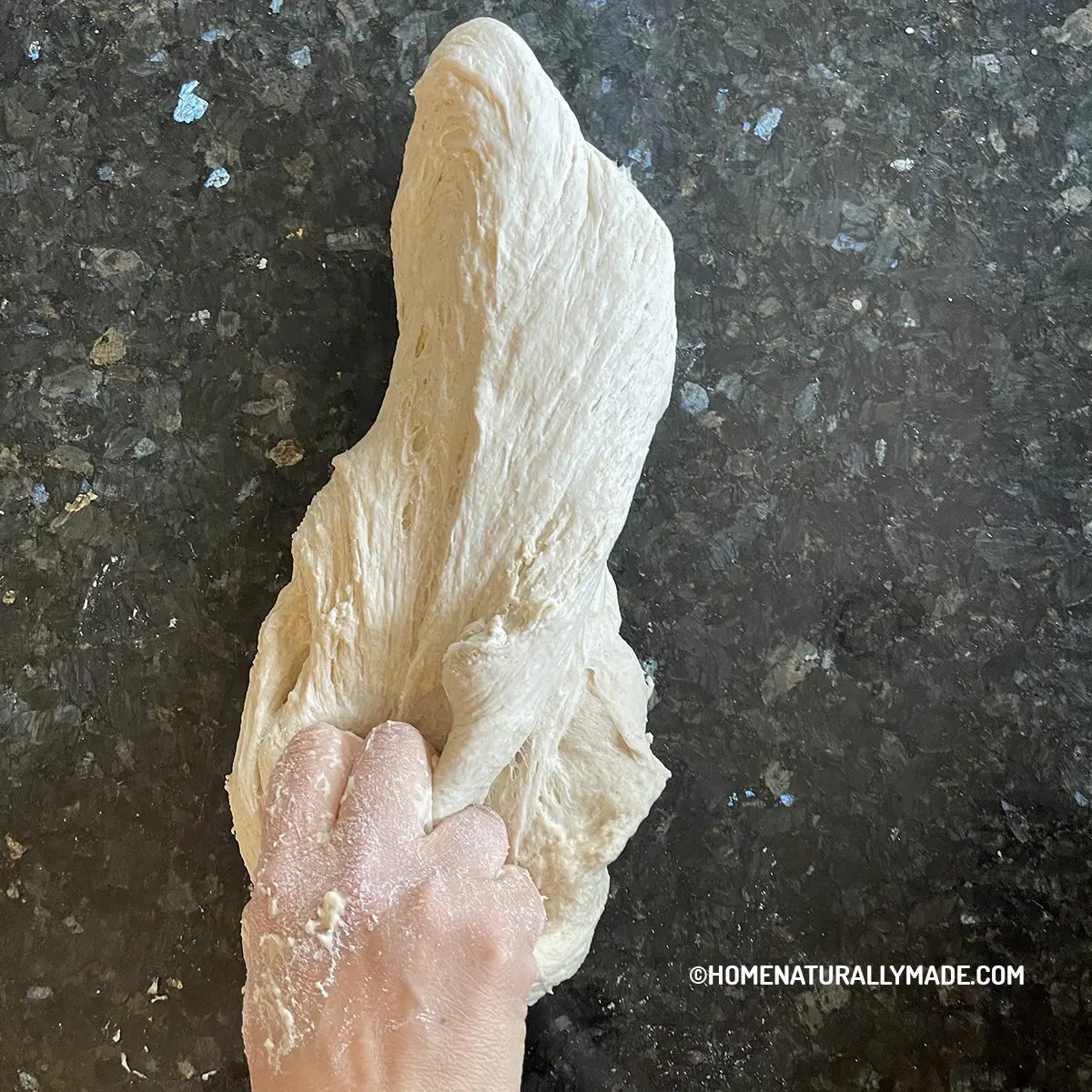
- Now you are ready to fold the dough and go through the Phase II proofing. This recipe makes two long French bread. Divide the dough into 2 equal portions.
- For each portion use your hands to knead into a long cylinder, similar length to the baguette pan, and then fold it into halves.
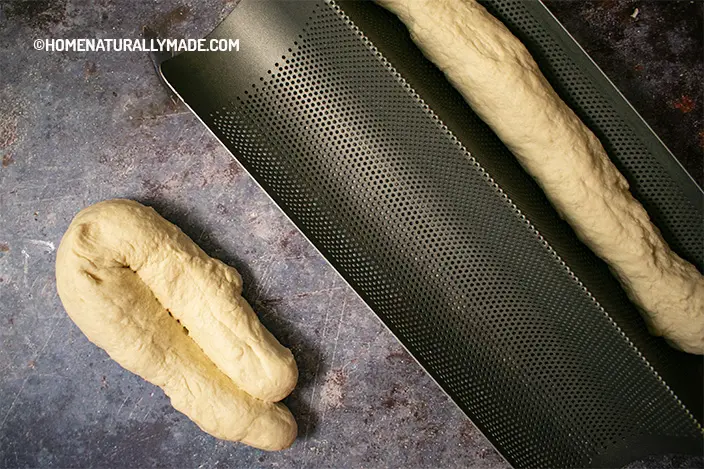
- Use both hands to hold each end and then twist while stretching to extend it back to the baguette pan length. Then repeat by folding the dough into haves and then twist while extending.
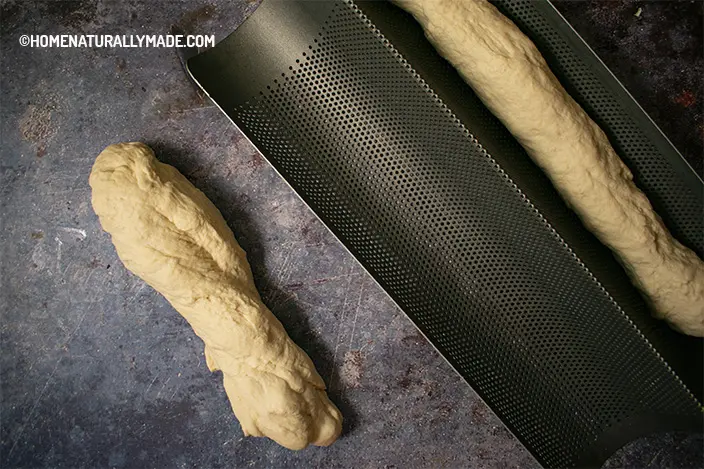
- Repeat this a couple of times, then gently roll it into a round cylinder shape and place them onto the baguette plan.

- Place the baguette pan in an enclosed area, such as the microwave, for about 2 hours or till the bread doubles its size.
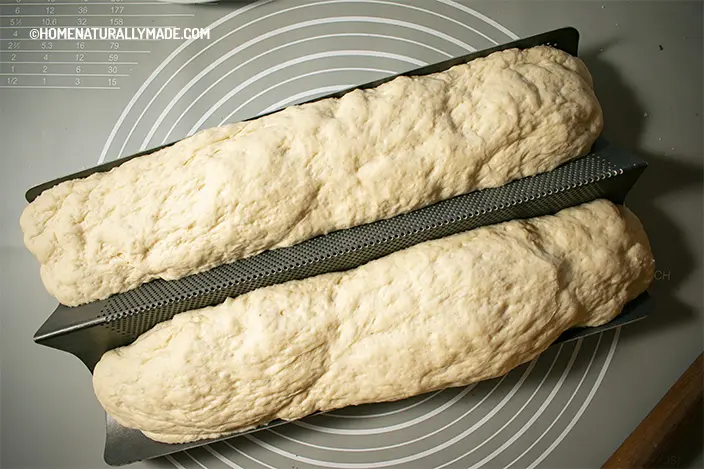
Bake French Bread:
- Preheat the oven to 375 F under "bake" mode. Place the baguette pan on the middle rack and bake for 30 minutes. Score the top of the bread if preferred right before adding it to the oven.
- Enjoy a super light and refreshingly tasty French Bread.
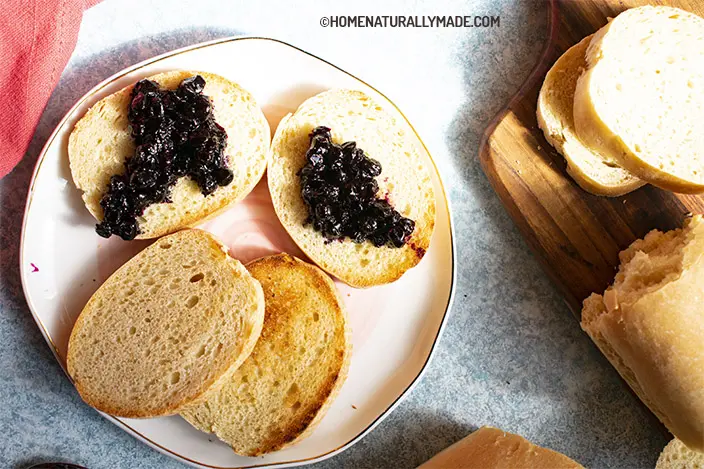
Notes
- Tip on how to store active dry yeast powder - I usually buy a 1 lb active dry yeast powder and store it in a glass jar in the freezer.
Recommended Products
As an Amazon Associate, I earn a small amount of commission from the qualifying purchases.
Nutrition Information
Yield 16 Serving Size 1Amount Per Serving Calories 165Total Fat 0gSaturated Fat 0gTrans Fat 0gUnsaturated Fat 0gCholesterol 0mgSodium 99mgCarbohydrates 35gFiber 1gSugar 1gProtein 5g
Nutrition calculation is provided by Nutritionix to the best knowledge per ingredients description and isn't always accurate.








